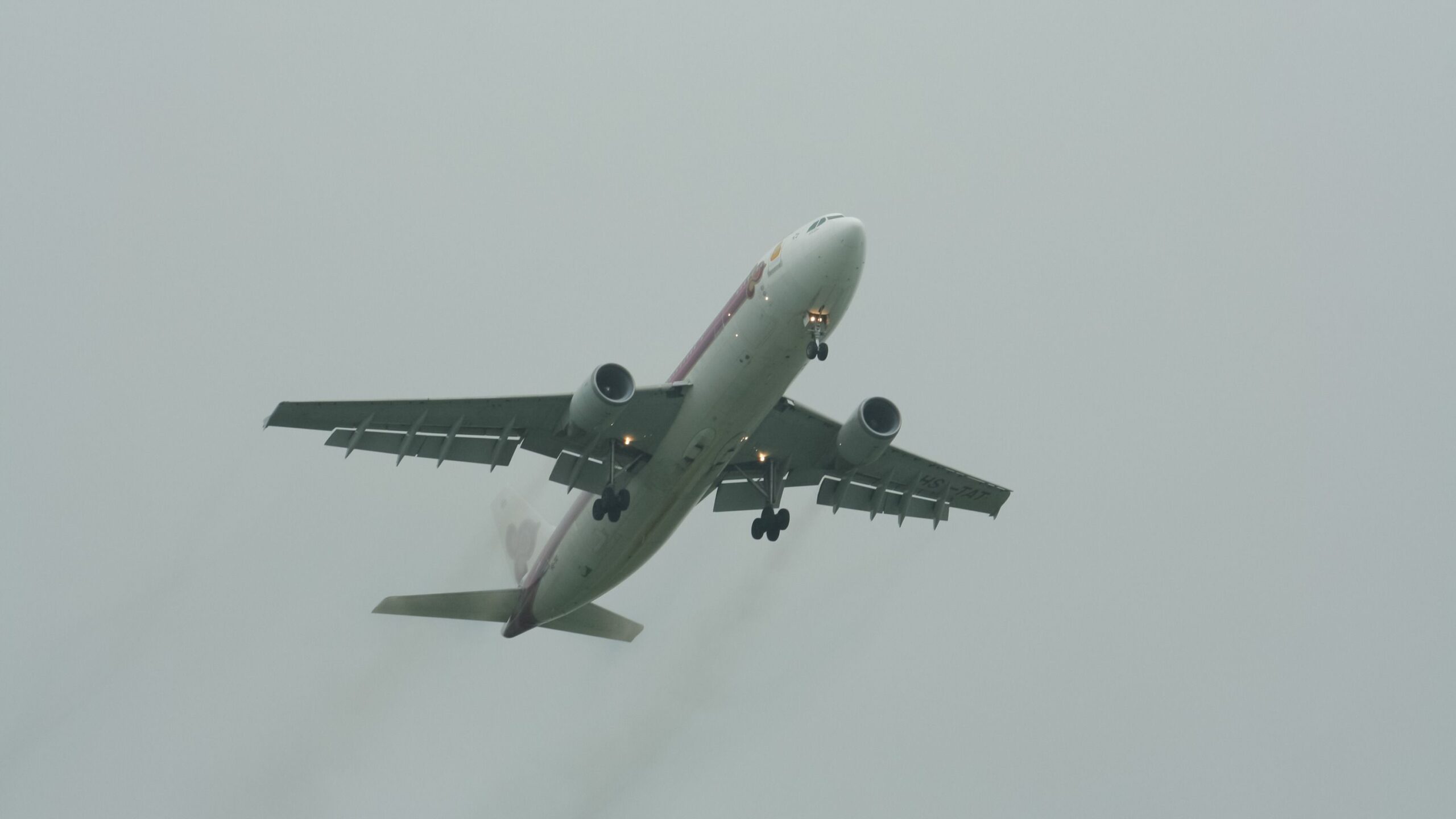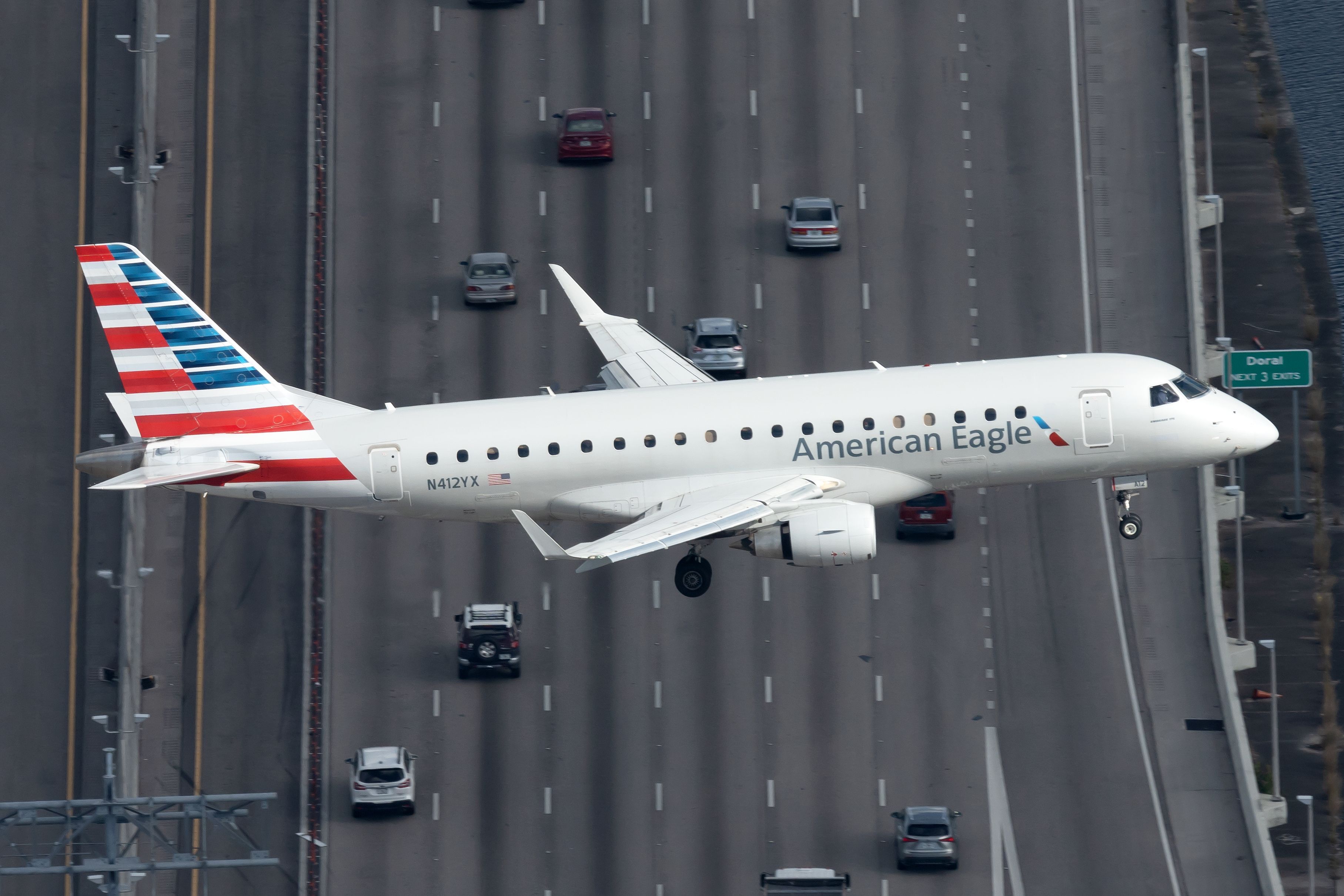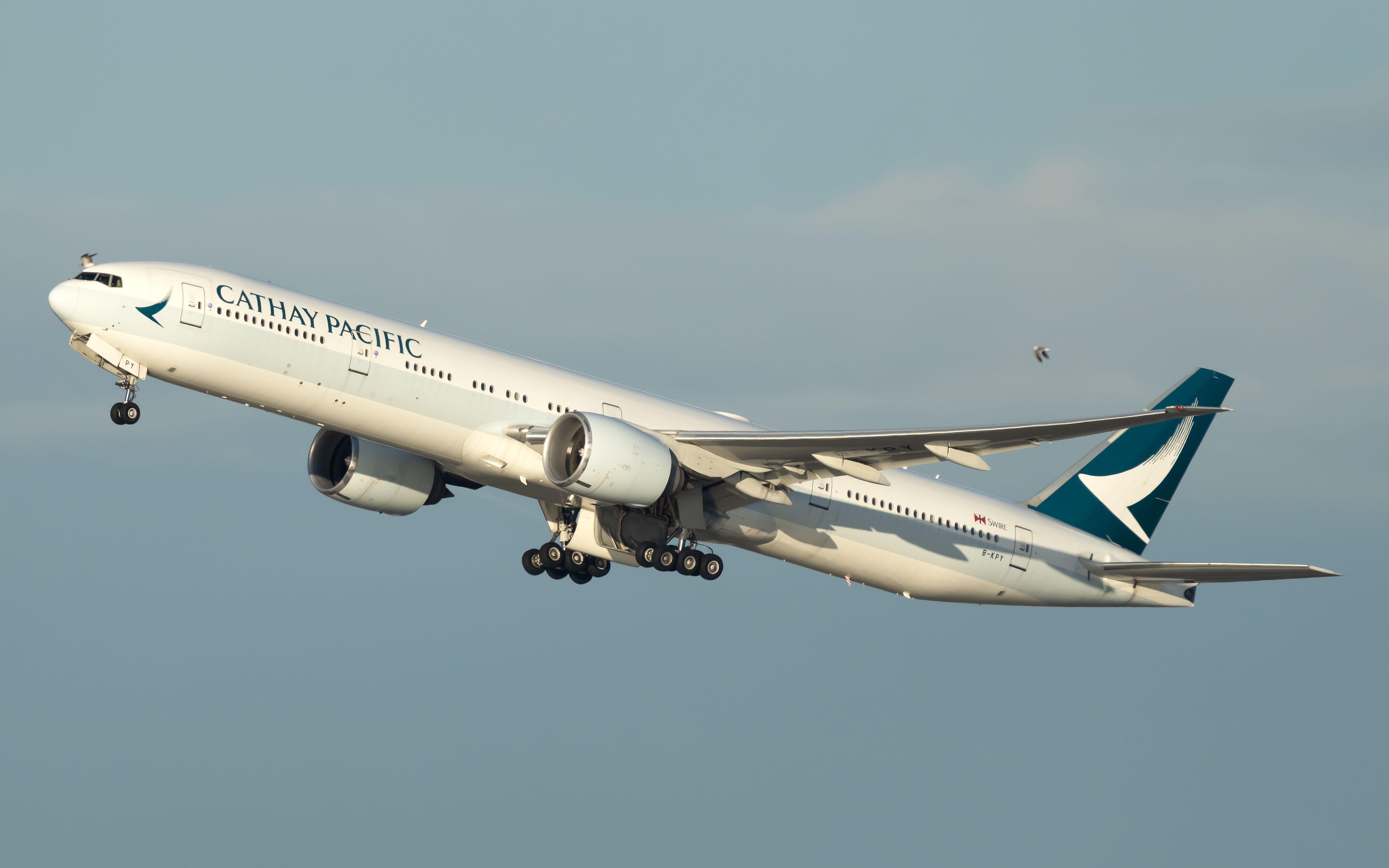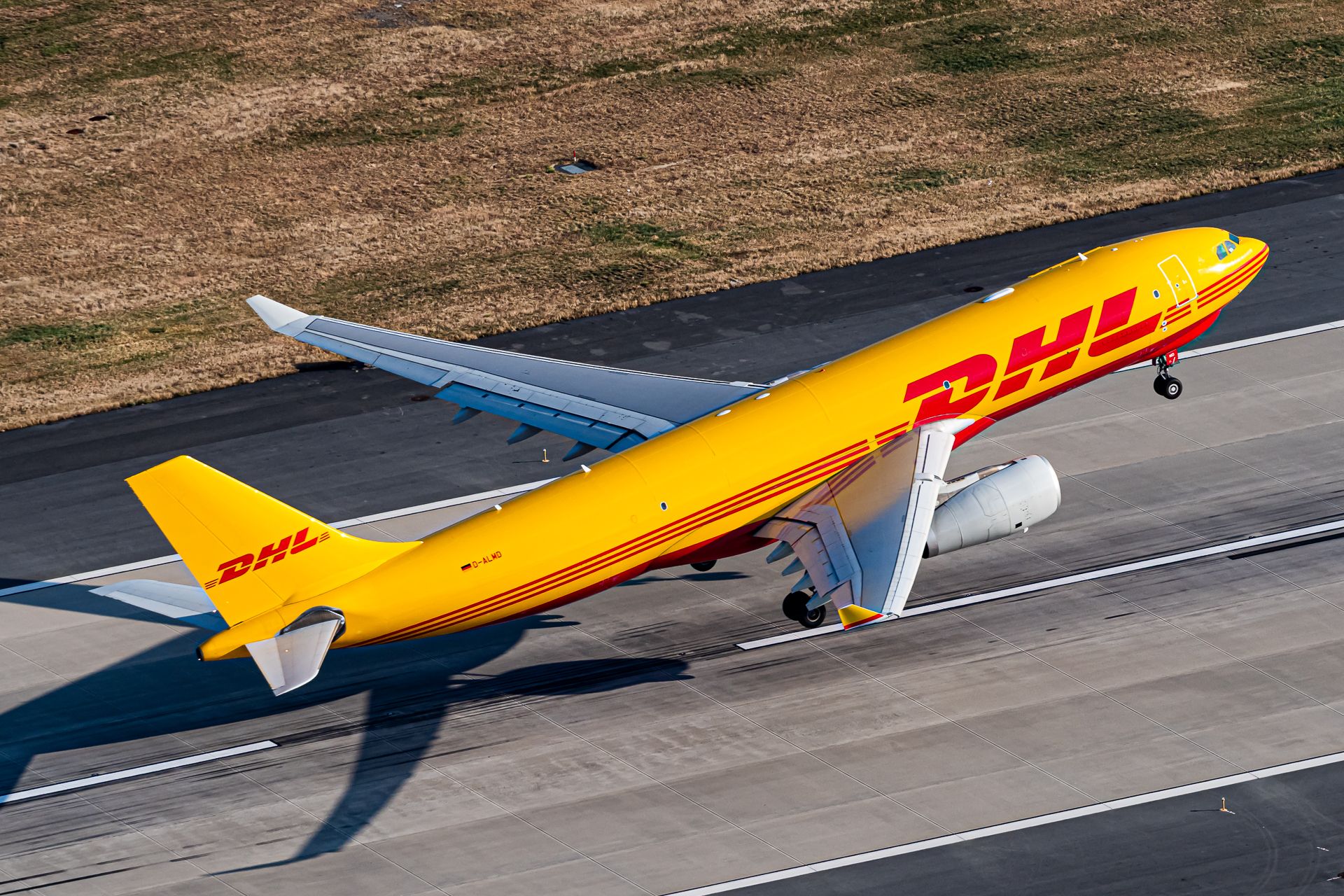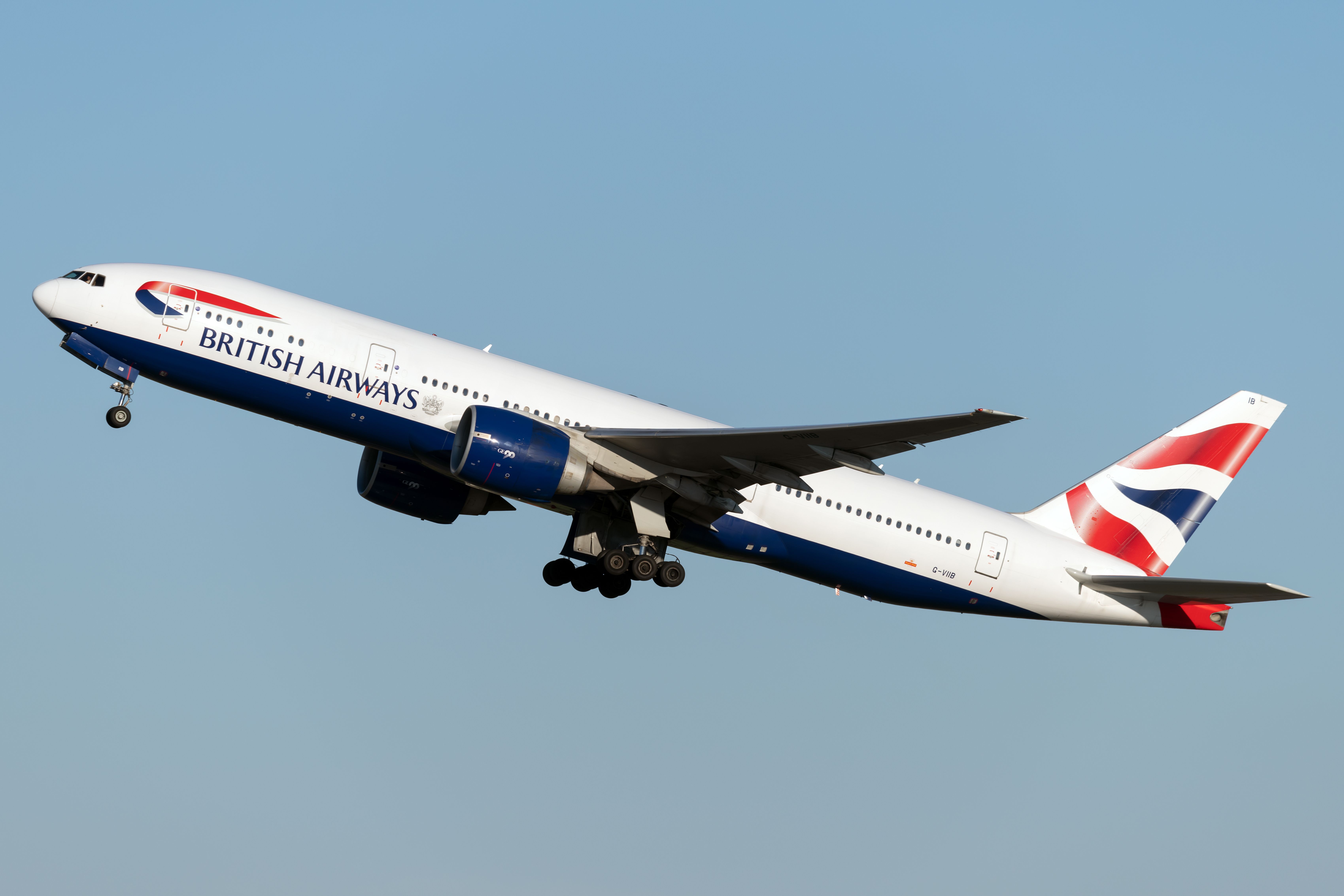Summary
- A go-around is when a pilot discontinues a landing and sets up for another approach.
- Go-arounds are often due to instability below 1,000 feet or when traffic is still occupying the landing runway.
- Pilots train and rehearse go-arounds, which involve multiple commands and steps, depending on the altitude and circumstances.
You’re in the window seat approaching the airport. You can see out the window that the flaps on the wings have been lowered. You hear the whooshing sound of the wind and feel a slight jolt in your feet as the gear extends from the fuselage. The trees get bigger, and you can make out the numbers and letters on street signs. Landing is only a few moments away. Suddenly, you hear the engines spool up and are pressed into your seat as the plane starts rocketing upward. Let’s talk about this moment: The go-around.
Defining a go-around
A go-around is a catch-all term for abandoning an approach to a runway before setting up for another approach at that same airport or an alternate. Go-arounds are most spectacular to witness at lower altitudes right before landing, but go-arounds can technically be flown anytime after pilots have been cleared for an approach. In the latter circumstance, the approach or tower controller may instruct the pilot(s) to “go-around,” or they might issue the lesser heard “cancel approach clearance, track the localizer inbound, climb and maintain 3,000 feet” (or something similar).
Photo: Vincenzo Pace I Simple Flying
Go-arounds are taught to students training for private pilot certificates and are continued to be flown up to the airline level. Going around in a training environment is much more common. Training focuses on increasing flying and handling skills during dynamic situations. Going around requires power and configuration changes at low altitudes, which new pilots must become proficient at before earning their ratings. At the airlines, go-arounds are flown when operationally required. Going around costs time and fuel, which is well worth it if needed, but prodigal if done without cause.
What leads to go-arounds?
One of the primary reasons for a go-around is instability below 1,000 feet. Airlines around the world generally define a stable approach in the same way: The aircraft must be fully configured to land, checklists completed, on speed, on a glide path in a constant position to make a safe landing (descent rate no greater than 1,000 feet per minute), and with the engines normally spooled. If any one of these conditions is untrue, a go-around is in order.
Another leading reason for go-arounds at major airports is traffic still occupying the landing runway. Approach controllers worldwide do fantastic work to sequence aircraft to their final approach course properly, and 99% of the time, the spacing is adequate to allow one plane to land and clear the runway before the next plane crosses the threshold. As a general rule of thumb, three-mile spacing between planes on short final is usually sufficient—any less, and pilots start to anticipate going around. If the preceding aircraft has not entirely cleared the runway before the next plane is about to land, controllers issue the go-around instruction, usually accompanied by an altitude and, sometimes, a heading.
Photo: Vincenzo Pace I Simple Flying
Airline go-arounds are flown for countless other reasons. Items include wind shear, traffic conflicts, “breakouts” on precision runway monitoring approaches, balked or bounced landings, or if the visibility isn’t adequate to land at the minimums of an approach procedure. Mechanical failures and traffic occupying an intersecting runway are a few more examples. Occasionally, go-arounds occur when the pilots cannot get a landing clearance from the tower (or forget to switch to the tower frequency). Regardless of the reason, go-arounds are dynamic and are flown slightly differently depending on the circumstances.
The choreography of go-arounds
Pilots train so that every go-around maneuver is rehearsed and calculated. A go-around is a complex, multi-step process that airline pilots do not fly regularly, so the maneuver is trained yearly in recurrent training. It’s entirely plausible that an airline pilot will go an entire year of flying the line without going around between practicing it in the simulator. For long-haul pilots, go-arounds might occur as infrequently as once every five years.
Low-altitude go-around
The pilot flying usually announces the go-around but can be called for by either pilot. The verbalized decision to go around is followed by rehearsed commands for a reduced flap configuration, the confirmation of a positive rate of climb, the “gear up” call, and multiple other commands for heading, altitude, flight management, and speed selection. Going around from a low altitude can include ten or more standardized calls and responses. Considering the rarity of go-arounds and their complexity, practicing them annually and being mentally prepared to fly a go-around on every approach is highly important.
Photo: Vincenzo Pace I Simple Flying
“Soft” go-around
Going around from a higher altitude before reaching the final approach fix is more tame. This scenario is often prompted by the earlier instruction: “Approach clearance canceled.” The autopilot is more likely to still be engaged at this point, and pilots use the automation to fly or hand-fly a “soft” go-around to their new cleared altitude without using TOGA power (takeoff/go-around). These go-arounds are less obvious and less spectacular as a passenger because the engines aren’t as loud, nor the pitch change difference as significant.
Windshear go-around
Perhaps the hardest go-around to fly is a wind shear escape. Pilots will never knowingly fly into wind shear, but it can still be encountered. Two main differences exist between a regular, low-altitude go-around and a wind shear go-around: No configuration changes are made, and the absolute maximum available thrust is used. Most airlines require the autopilot and autothrottles to be disconnected to fly a wind shear escape go-around so that pilots can manually adjust the pitch and power to their maximum limits.
Photo: Vincenzo Pace I Simple Flying
The gear is left down and flaps extended because their retraction would incur a momentary loss of lift, a sacrifice that cannot be made when caught in wind shear. The pilot flying focuses on achieving maximum performance.The pilot monitoring usually calls out the height displayed on the radar altimeter and any climbing or descending trends to aid situational awareness. Once the wind shear has been cleared and a normal rate of climb achieved, the pilots can start retracting the gear and flaps.
On the go…
If you’re a passenger with somewhere to be, a go-around probably isn’t a favorable outcome of an approach. For plane spotters set-up adjacent to the landing runway, go-arounds are an amusing, uncommon sight to see. For airline pilots, go-arounds are a rare but well-rehearsed choreography of call-outs and actions.

